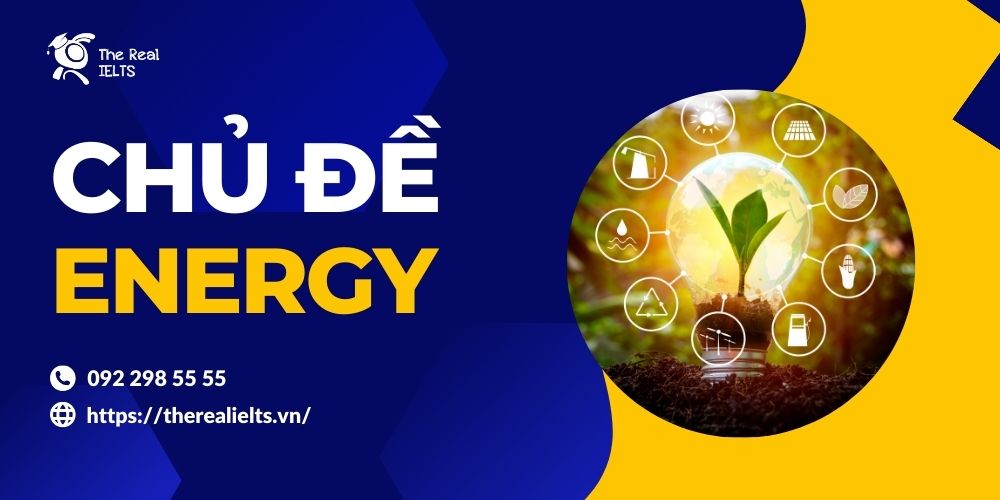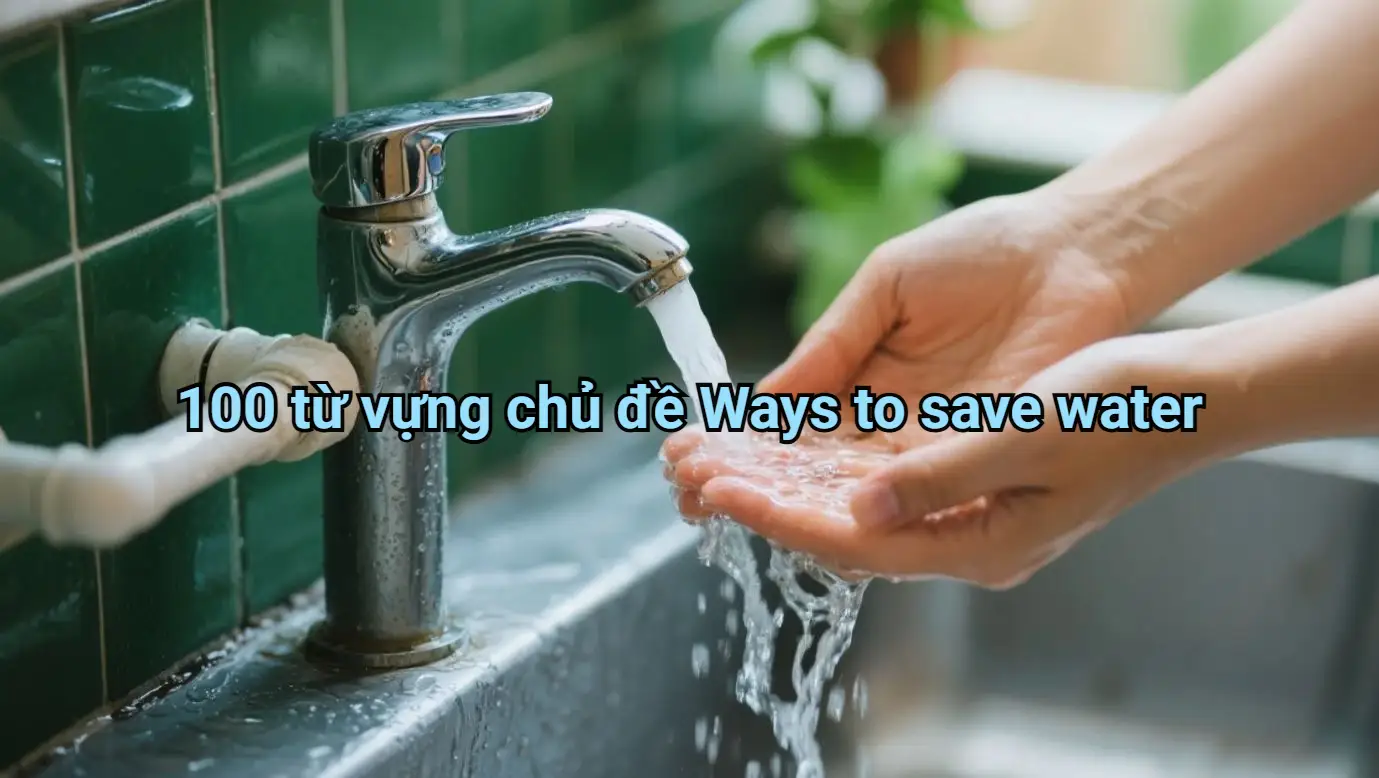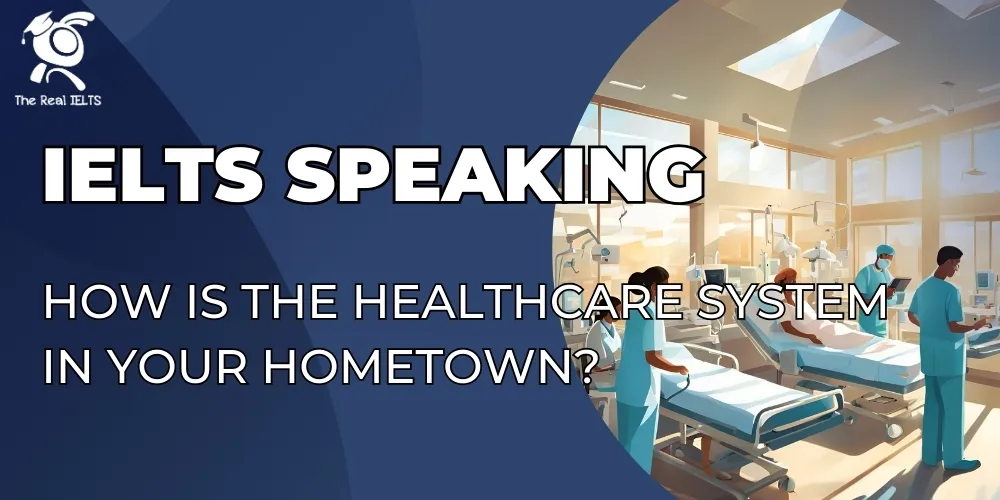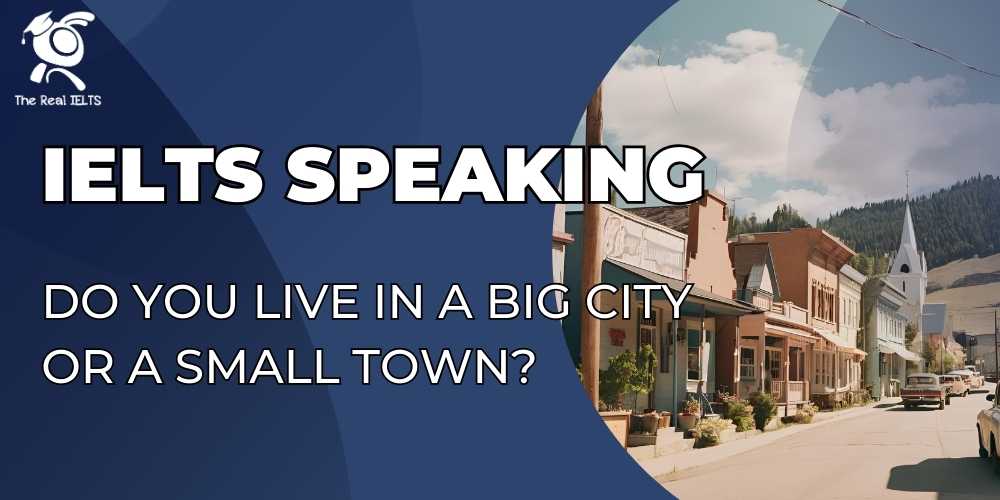Chủ đề Energy là một trong nhiều chủ đề từ vựng được TRI biên soạn phục vụ cho các bạn luyện từ vựng thi IELTS. Trong phần biên soạn này bao gồm: Từ vựng, dịch nghĩa, đặt câu ví dụ và dịch nghĩa câu ví dụ.
Từ vựng chủ đề Energy
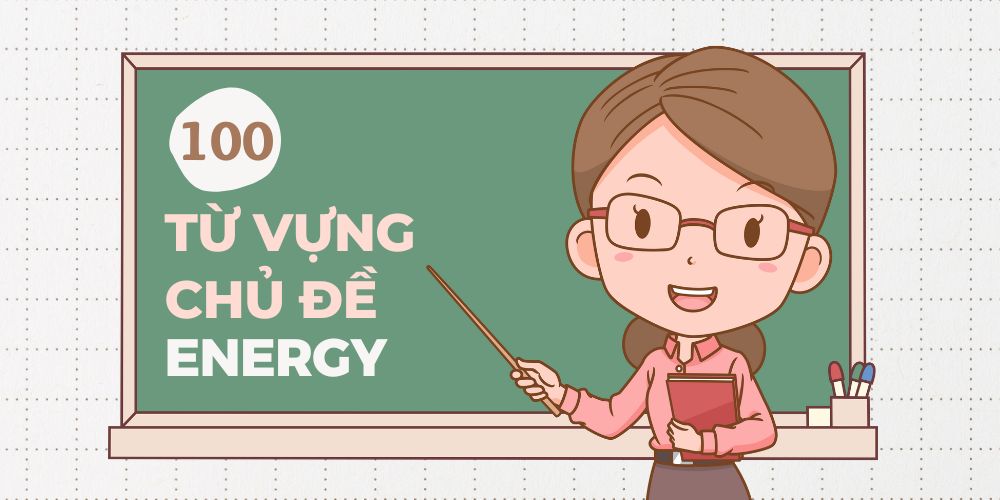

| Energy | Năng lượng | The sun radiates vast amounts of energy every day. | Mặt trời phát ra lượng năng lượng lớn mỗi ngày. |
| Power | Điện | The hydroelectric dam generates significant power for the local community. | Nhà máy thủy điện tạo ra một lượng điện đáng kể cho cộng đồng địa phương. |
| Renewable | Tái tạo | Solar panels utilize the sun’s renewable energy to produce electricity. | Tấm pin năng lượng mặt trời sử dụng năng lượng tái tạo của mặt trời để sản xuất điện. |
| Non-renewable | Không tái tạo | Fossil fuels, such as coal and oil, are non-renewable resources that contribute to pollution. | Nhiên liệu hóa thạch như than và dầu là nguồn tài nguyên không tái tạo góp phần vào ô nhiễm. |
| Solar | Năng lượng mặt trời | Solar energy is harnessed through photovoltaic panels to provide sustainable power. | Năng lượng mặt trời được khai thác thông qua các tấm pin quang điện để cung cấp nguồn điện bền vững. |
| Wind | Năng lượng gió | Wind turbines convert wind energy into electrical power. | Các cột gió chuyển đổi năng lượng gió thành điện. |
| Hydroelectric | Thủy điện | The hydroelectric plant relies on water flow to generate electricity. | Nhà máy thủy điện phụ thuộc vào sự chảy nước để tạo ra điện. |
| Biomass | Sinh học | Biomass energy is produced from organic materials such as wood chips or agricultural waste. | Năng lượng sinh học được sản xuất từ vật liệu hữu cơ như viên gỗ hoặc chất thải nông nghiệp. |
| Geothermal | Nhiệt đất | Geothermal energy taps into the Earth’s heat for heating and electricity generation. | Năng lượng địa nhiệt tận dụng nhiệt độ của Trái đất để sưởi ấm và tạo điện. |
| Fossil fuels | Nhiên liệu hóa thạch | The burning of fossil fuels releases carbon dioxide into the atmosphere. | Việc đốt cháy nhiên liệu hóa thạch thải ra khí carbon dioxide vào khí quyển. |
| Electricity | Điện | The power outage left many homes without electricity for hours. | Sự cắt điện đã khiến nhiều nhà không có điện trong vài giờ. |
| Conservation | Bảo tồn | Conservation efforts aim to reduce energy consumption and protect natural resources. | Các nỗ lực bảo tồn nhằm giảm tiêu thụ năng lượng và bảo vệ tài nguyên thiên nhiên. |
| Efficiency | Hiệu quả | Upgrading to energy-efficient appliances can lead to significant cost savings over time. | Nâng cấp sang thiết bị tiết kiệm năng lượng có thể giúp tiết kiệm chi phí đáng kể theo thời gian. |
| Sustainable | Bền vững | Sustainable energy practices prioritize environmental responsibility and long-term viability. | Thực hành năng lượng bền vững ưu tiên trách nhiệm môi trường và tính bền vững lâu dài. |
| Nuclear | Hạt nhân | Nuclear power plants generate electricity through controlled nuclear reactions. | Nhà máy điện hạt nhân tạo ra điện qua các phản ứng hạt nhân được kiểm soát. |
| Turbine | Turbine (cánh quạt) | The wind turbine spins to convert wind energy into mechanical power. | Cột gió quay để chuyển đổi năng lượng gió thành công suất cơ khí. |
| Generator | Máy phát điện | The generator converts mechanical energy into electrical energy. | Máy phát điện chuyển đổi năng lượng cơ khí thành năng lượng điện. |
| Photovoltaic | Quang điện | Photovoltaic cells in solar panels capture sunlight and convert it into electricity. | Các tế bào quang điện trong tấm pin năng lượng mặt trời chụp ánh sáng mặt trời và chuyển đổi nó thành điện. |
| Battery | Pin năng lượng mặt trời | Electric cars rely on batteries to store energy for propulsion. | Xe điện dựa vào pin để lưu trữ năng lượng cho việc di chuyển. |
| Grid | Ắc quy | The electrical grid distributes power from generating stations to homes and businesses. | Lưới điện phân phối điện từ các trạm phát điện đến nhà và doanh nghiệp. |
| Carbon footprint | Lưới điện | Reducing your carbon footprint can help mitigate climate change. | Giảm lượng carbon footprint của bạn có thể giúp giảm nhẹ biến đổi khí hậu. |
| Emission | Dấu chân carbon | Vehicle emissions contribute to air pollution and climate change. | Khí thải từ xe cộ đóng góp vào ô nhiễm không khí và biến đổi khí hậu. |
| Alternative | Khí thải | Alternative energy sources offer cleaner and more sustainable alternatives to fossil fuels. | Nguồn năng lượng thay thế cung cấp các lựa chọn sạch sẽ và bền vững hơn so với nhiên liệu hóa thạch. |
| Energy crisis | Lựa chọn | The energy crisis prompted widespread discussions about transitioning to renewable energy. | Khan hiếm năng lượng đã thúc đẩy các cuộc thảo luận rộng rãi về chuyển đổi sang năng lượng tái tạo. |
| Fuel cell | Khủng hoảng năng lượng | Fuel cells use hydrogen to produce electricity through a chemical reaction. | Cell nhiên liệu sử dụng hydrogen để tạo điện qua phản ứng hóa học. |
| Tidal | Tế bào nhiên liệu | Tidal energy harnesses the power of ocean tides to generate electricity. | Năng lượng thủy triều tận dụng sức mạnh của thủy triều để tạo ra điện. |
| Wave | Thủy triều | Wave energy converters capture the kinetic energy of ocean waves. | Bộ chuyển đổi năng lượng sóng biển chụp lại năng lượng động của sóng biển. |
| Kinetic energy | Sóng | Kinetic energy is the energy of motion, such as a moving car or a spinning turbine. | Năng lượng động học là năng lượng của chuyển động, như một chiếc xe đang chạy hoặc một cột gió quay. |
| Potential energy | Năng lượng động | Water stored in a reservoir has potential energy that can be converted into electricity. | Nước lưu trữ trong một hồ chứa có năng lượng tiềm năng có thể được chuyển đổi thành điện. |
| Thermal energy | Năng lượng tiềm năng | Thermal energy is produced by heat and can be used for heating or electricity generation. | Năng lượng nhiệt được sản xuất từ nhiệt và có thể được sử dụng để sưởi ấm hoặc tạo điện. |
| Energy storage | Năng lượng nhiệt | What innovative methods are being developed for energy storage in renewable systems? | Các phương pháp sáng tạo nào đang được phát triển cho việc lưu trữ năng lượng trong các hệ thống tái tạo? |
| Cogeneration | Lưu trữ năng lượng | How does cogeneration contribute to maximizing energy efficiency in industrial processes? | Làm thế nào hệ thống cộng sinh đóng góp vào việc tối ưu hóa hiệu suất năng lượng trong các quy trình công nghiệp? |
| Off-grid | Hợp sinh năng | What challenges arise when implementing off-grid energy solutions in remote areas? | Các thách thức nảy sinh khi triển khai các giải pháp năng lượng ngoại lưới ở các khu vực xa xôi là gì? |
| Smart grid | Ngoại lưới | How does a smart grid optimize energy distribution and consumption through advanced technology? | Làm thế nào lưới thông minh tối ưu hóa phân phối và tiêu thụ năng lượng thông qua công nghệ tiên tiến? |
| Energy-efficient | Lưới thông minh | What are the key features of an energy-efficient building design? | Những đặc điểm chính của thiết kế tòa nhà hiệu quả năng lượng là gì? |
| Insulation | Tiết kiệm năng lượng | How does proper insulation contribute to reducing energy loss in residential and commercial structures? | Làm thế nào cách cách cách nhiệt đúng cách góp phần giảm thiểu mất năng lượng trong các công trình dân dụ và thương mại? |
| Hydropower | Cách nhiệt | What factors influence the feasibility and sustainability of hydropower projects? | Những yếu tố nào ảnh hưởng đến khả năng khả thi và bền vững của các dự án thủy điện? |
| Photothermal | Thủy điện | What are the advantages of using photothermal systems for renewable energy production? | Lợi ích của việc sử dụng hệ thống nhiệt mặt trời cho sản xuất năng lượng tái tạo là gì? |
| Greenhouse gas | Quang nhiệt | What strategies can be employed to mitigate the emission of greenhouse gases in urban areas? | Các chiến lược nào có thể được áp dụng để giảm thiểu phát thải khí nhà kính trong các khu vực đô thị? |
| Biofuel | Khí thải nhà kính | How does the production and utilization of biofuels contribute to reducing dependence on fossil fuels? | Làm thế nào việc sản xuất và sử dụng nhiên liệu sinh học đóng góp vào việc giảm sự phụ thuộc vào nhiên liệu hóa thạch? |
| Climate change | Nhiệt độ biến đổi khí hậu | What evidence supports the link between human activities and global climate change? | Bằng chứng nào hỗ trợ mối liên kết giữa hoạt động của con người và biến đổi khí hậu toàn cầu? |
| Sustainable development | Phát triển bền vững | How can sustainable development goals be integrated into urban planning and infrastructure projects? | Làm thế nào các mục tiêu phát triển bền vững có thể được tích hợp vào quy hoạch đô thị và các dự án hạ tầng? |
| Carbon neutral | Khí thải carbon | What initiatives can industries take to achieve carbon-neutral operations? | Các sáng kiến nào mà các ngành công nghiệp có thể thực hiện để đạt được hoạt động không tạo ra khí nhà kính? |
| Energy consumption | Tiêu thụ năng lượng | How can individuals and businesses reduce their energy consumption through behavior change and technology adoption? | Làm thế nào cá nhân và doanh nghiệp có thể giảm tiêu thụ năng lượng của họ thông qua thay đổi hành vi và sự áp dụng công nghệ? |
| Power plant | Nhà máy điện | What are the environmental impacts associated with different types of power plants? | Các tác động môi trường liên quan đến các loại nhà máy điện khác nhau là gì? |
| Grid-tied | Liên kết lưới | What are the benefits and challenges of grid-tied renewable energy systems? | Lợi ích và thách thức của các hệ thống năng lượng tái tạo liên kết với lưới là gì? |
| Net metering | Đo lường lưới | How does net metering incentivize renewable energy production at the household level? | Làm thế nào hệ thống đo lường net metering khuyến khích sản xuất năng lượng tái tạo ở mức hộ gia đình? |
| Carbon dioxide | Khí carbon dioxide | What are the primary sources and consequences of carbon dioxide emissions? | Nguồn và hậu quả chính của khí carbon dioxide là gì? |
| Methane | Methane | How does methane contribute to both energy production and environmental degradation? | Làm thế nào methane đóng góp vào cả sản xuất năng lượng và suy thoái môi trường? |
| Coal | Than | What are the main challenges in transitioning from fossil fuels like coal, oil, and natural gas to renewable energy sources? | Những thách thức chính khi chuyển từ năng lượng hóa thạch như than, dầu và khí tự nhiên sang nguồn năng lượng tái tạo là gì? |
| Oil | Dầu | Many countries heavily rely on oil for their energy needs. | Nhiều quốc gia phụ thuộc nặng nề vào dầu để đáp ứng nhu cầu năng lượng của họ. |
| Natural gas | Khí tự nhiên | The use of natural gas has been increasing due to its relatively cleaner burning properties. | Việc sử dụng khí tự nhiên đã tăng lên do tính cháy sạch tương đối của nó. |
| Energy transition | Chuyển giao năng lượng | Countries worldwide are undergoing an energy transition towards renewable sources. | Các quốc gia trên khắp thế giới đang trải qua quá trình chuyển đổi năng lượng hướng về nguồn tái tạo. |
| Power generation | Sinh năng điện | Power generation from renewable sources like solar and wind is gaining momentum. | Sản xuất điện từ nguồn năng lượng tái tạo như năng lượng mặt trời và gió đang ngày càng phát triển. |
| Heat pump | Máy phát điện nhiệt | A heat pump efficiently transfers heat from one place to another. | Một máy bơi nhiệt chuyển nhiệt hiệu quả từ một nơi sang nơi khác. |
| Photocell | Tế bào quang điện | A photocell converts light into electricity, commonly used in solar panels. | Một tế bào quang điện chuyển đổi ánh sáng thành điện năng, thường được sử dụng trong các tấm pin năng lượng mặt trời. |
| Radiant energy | Năng lượng tia | Radiant energy from the sun is harnessed through solar panels. | Năng lượng tỏa từ mặt trời được khai thác thông qua các tấm pin mặt trời. |
| Carbon capture | Bắt carbon | Carbon capture technologies aim to reduce greenhouse gas emissions from industrial processes. | Các công nghệ hấp thụ carbon nhằm giảm lượng khí nhà kính từ quá trình công nghiệp. |
| Renewability | Sự tái tạo | The renewability of energy sources is crucial for sustainability. | Tính tái tạo của nguồn năng lượng là quan trọng cho sự bền vững. |
| Microgrid | Lưới nhỏ | A microgrid is a localized group of electricity sources and loads that can operate independently. | Một lưới điện phân phối là một nhóm cục bộ của các nguồn và tải điện có thể hoạt động độc lập. |
| Inverter | Biến đổi ngược | An inverter converts DC power from sources like solar panels into AC power for household use. | Một bộ biến đổi chuyển đổi điện DC từ nguồn như tấm pin mặt trời thành điện AC để sử dụng trong gia đình. |
| Kilowatt-hour | Kilowatt-giờ | Kilowatt-hour is a unit of energy commonly used to measure electricity consumption. | Kilowatt-hour là đơn vị năng lượng thường được sử dụng để đo lường tiêu thụ điện. |
| Megawatt | Megawatt | Megawatt is a unit of power equal to one million watts, commonly used to measure the output of power plants. | Megawatt là đơn vị công suất bằng một triệu watt, thường được sử dụng để đo lường công suất của các nhà máy điện. |
| Gigawatt | Gigawatt | Gigawatt is a unit of power equal to one billion watts, often used to describe large-scale power generation capacity. | Gigawatt là đơn vị công suất bằng một tỷ watt, thường được sử dụng để mô tả khả năng phát điện quy mô lớn. |
| Energy policy | Chính sách năng lượng | Energy policy dictates the strategies and regulations governing energy production, distribution, and consumption. | Chính sách năng lượng quy định các chiến lược và quy định điều chỉnh sản xuất, phân phối và tiêu thụ năng lượng. |
| Energy-efficient appliances | Thiết bị tiết kiệm năng lượng | Energy-efficient appliances consume less energy while providing the same level of performance. | Các thiết bị tiết kiệm năng lượng tiêu thụ ít năng lượng trong khi vẫn cung cấp cùng mức hiệu suất. |
| Energy audit | Kiểm toán năng lượng | An energy audit assesses energy usage in buildings and identifies opportunities for efficiency improvements. | Một đánh giá năng lượng kiểm tra việc sử dụng năng lượng trong các tòa nhà và xác định cơ hội để cải thiện hiệu suất. |
| Carbon offset | Bù carbon | Carbon offsetting involves compensating for carbon emissions by investing in projects that reduce or capture carbon elsewhere. | Bù carbon liên quan đến việc đền bù cho lượng khí carbon bằng cách đầu tư vào các dự án giảm hoặc hấp thụ carbon ở nơi khác. |
| Sustainable living | Cuộc sống bền vững | Sustainable living involves adopting practices that minimize environmental impact and promote long-term ecological balance. | Sống bền vững liên quan đến việc áp dụng các thực hành giảm thiểu tác động môi trường và thúc đẩy cân bằng sinh thái lâu dài. |
| Passive solar | Năng lượng mặt trời tự nhiên | Passive solar design maximizes the use of sunlight for heating buildings without the use of mechanical systems. | Thiết kế năng lượng mặt trời ch passif tối đa hóa việc sử dụng ánh sáng mặt trời để sưởi ấm tòa nhà mà không cần sử dụng hệ thống cơ khí. |
| Sustainable transportation | Giao thông bền vững | Sustainable transportation aims to reduce environmental impact by promoting modes such as walking, cycling, and public transit. | Giao thông bền vững nhằm giảm thiểu tác động môi trường bằng cách thúc đẩy các phương tiện như đi bộ, đạp xe và giao thông công cộng. |
| Fuel efficiency | Hiệu suất nhiên liệu | Fuel efficiency measures the ability of a vehicle or system to utilize fuel effectively, reducing energy consumption and emissions. | Hiệu quả nhiên liệu đo lường khả năng của một phương tiện hoặc hệ thống sử dụng nhiên liệu một cách hiệu quả, giảm tiêu thụ năng lượng và phát thải. |
| Wind farm | Trang trại gió | A wind farm is a collection of wind turbines used to generate electricity. | Một trang trại gió là một tập hợp các động cơ gió được sử dụng để tạo ra điện. |
| Solar panel | Tấm pin mặt trời | A solar panel is a device that converts sunlight into electricity using photovoltaic cells. | Một tấm pin mặt trời là một thiết bị chuyển đổi ánh sáng mặt trời thành điện năng bằng cách sử dụng tế bào quang điện. |
| Battery storage | Lưu trữ năng lượng | Battery storage allows for the storage of electricity generated from renewable sources for later use. | Lưu trữ pin cho phép lưu trữ điện năng được tạo ra từ các nguồn tái tạo để sử dụng sau này. |
| Carbon trading | Thương mại carbon | Carbon trading involves buying and selling permits to emit carbon dioxide or other greenhouse gases, aimed at reducing overall emissions. | Thương mại carbon liên quan đến mua bán giấy phép phát thải carbon dioxide hoặc khí nhà kính khác, nhằm giảm tổng lượng phát thải. |
| Zero-emission | Không phát thải | Zero-emission refers to vehicles or technologies that produce no harmful emissions during operation. | Không phát thải liên quan đến các phương tiện hoặc công nghệ không tạo ra phát thải có hại trong quá trình hoạt động. |
| Ozone layer | Tầng ozon | The ozone layer is a region of Earth’s stratosphere that contains a high concentration of ozone, protecting life on Earth from harmful ultraviolet radiation. | Tầng ozone là một vùng trong tầng bình lưu của bầu khí quyển Trái Đất chứa nồng độ cao ozone, bảo vệ sự sống trên Trái Đất khỏi tác động có hại của tia tử ngoại. |
| Green energy | Năng lượng xanh | Green energy is energy derived from renewable, environmentally friendly sources such as wind, solar, and hydroelectric power. | Năng lượng xanh là năng lượng được tạo ra từ các nguồn tái tạo và thân thiện với môi trường như gió, năng lượng mặt trời và thủy điện. |
| Energy source | Nguồn năng lượng | An energy source is a substance or phenomenon that provides power to generate heat, electricity, or other forms of energy. | Nguồn năng lượng là chất hoặc hiện tượng cung cấp năng lượng để tạo ra nhiệt, điện, hoặc các hình thức năng lượng khác. |
| Energy independence | Độc lập năng lượng | Energy independence refers to a state’s ability to produce its own energy without relying on external sources. | Độc lập năng lượng đề cập đến khả năng của một quốc gia tạo ra năng lượng của mình mà không phải phụ thuộc vào nguồn cung từ bên ngoài. |
| Insolation | Chiếu sáng mặt trời | Insolation refers to the amount of solar radiation received on a given surface area during a specific time period. | Insolation là lượng bức xạ mặt trời nhận được trên một diện tích bề mặt cụ thể trong khoảng thời gian nhất định. |
| Smart meter | Đồng hồ đo thông minh | A smart meter is a device that measures and records electrical consumption in intervals and communicates that information back to the utility company for monitoring and billing purposes. | Máy đo thông minh là thiết bị đo và ghi lại tiêu thụ điện theo khoảng thời gian và truyền thông tin đó về lại công ty điện để theo dõi và lập hóa đơn. |
| Demand response | Phản ứng theo yêu cầu | Demand response is a strategy to manage electricity consumption during peak periods by adjusting usage in response to price signals or incentives. | Phản ứng theo nhu cầu là một chiến lược quản lý tiêu thụ điện trong các đợt cao điểm bằng cách điều chỉnh việc sử dụng phản ứng theo tín hiệu giá hoặc ưu đãi. |
| Thermal insulation | Cách nhiệt nhiệt độ | Thermal insulation reduces heat transfer between objects, helping to maintain desired temperatures and improve energy efficiency. | Cách nhiệt giảm chuyển giao nhiệt độ giữa các đối tượng, giúp duy trì nhiệt độ mong muốn và nâng cao hiệu suất năng lượng. |
| Green building | Xây dựng xanh | A green building incorporates environmentally friendly design, construction, and operation practices to minimize its impact on the environment and human health. | Một tòa nhà xanh tích hợp các thiết kế, xây dựng và thực hiện thân thiện với môi trường để giảm thiểu tác động của nó đối với môi trường và sức khỏe con người. |
| Carbon footprint | Dấu chân carbon | A carbon footprint is the total amount of greenhouse gases emitted directly or indirectly by an individual, organization, product, or activity. | Dấu chân carbon là tổng lượng khí nhà kính được phát thải trực tiếp hoặc gián tiếp bởi một cá nhân, tổ chức, sản phẩm hoặc hoạt động nào đó. |
| Decentralized energy | Năng lượng phi tập trung | Decentralized energy refers to energy generation that is distributed over a wide area, often using small-scale renewable technologies. | Năng lượng phi tập trung đề cập đến việc tạo ra năng lượng được phân phối rộng rãi trên một khu vực lớn, thường sử dụng các công nghệ tái tạo quy mô nhỏ. |
| Renewable portfolio standard | Tiêu chuẩn danh mục tái tạo | A renewable portfolio standard mandates that a certain percentage of energy production come from renewable sources within a specified timeframe. | Tiêu chuẩn danh mục tái tạo yêu cầu một tỷ lệ nhất định của sản xuất năng lượng phải đến từ các nguồn tái tạo trong một khoảng thời gian nhất định. |
| Photovoltaic cell | Tế bào quang điện | A photovoltaic cell is a semiconductor device that converts sunlight directly into electricity. | Một tế bào quang điện là một thiết bị bán dẫn chuyển đổi ánh sáng mặt trời trực tiếp thành điện. |
| Energy efficiency ratio | Tỷ số hiệu quả năng lượng | The energy efficiency ratio measures the efficiency of an appliance in converting energy input to useful output. | Tỷ số hiệu suất năng lượng đo lường hiệu suất của một thiết bị trong việc chuyển đổi đầu vào năng lượng thành đầu ra hữu ích. |
| Energy-efficient lighting | Thiết bị chiếu sáng hiệu quả | Energy-efficient lighting includes technologies such as LED and CFL bulbs that consume less energy than traditional incandescent bulbs. | Ánh sáng tiết kiệm năng lượng bao gồm các công nghệ như đèn LED và bóng đèn CFL tiêu thụ ít năng lượng hơn so với bóng đèn dây tóc truyền thống. |
| Green technology | Công nghệ xanh | Green technology encompasses innovative solutions designed to address environmental challenges and promote sustainability. | Công nghệ xanh bao gồm các giải pháp đổi mới được thiết kế để giải quyết các thách thức môi trường và thúc đẩy tính bền vững. |
| Carbon sequestration | Bắt carbon | Carbon sequestration is the capture and storage of carbon dioxide to mitigate its release into the atmosphere, often through biological, geological, or technological means. | Lưu trữ carbon là quá trình thu và lưu trữ khí CO2 nhằm giảm thiểu sự phát thải nó vào khí quyển, thường thông qua các phương tiện sinh học, địa chất hoặc công nghệ. |
| Sustainable architecture | Kiến trúc bền vững | Sustainable architecture integrates environmentally conscious design principles to minimize resource consumption and environmental impact in the construction and operation of buildings. | Kiến trúc bền vững tích hợp các nguyên tắc thiết kế có ý thức môi trường nhằm giảm thiểu việc sử dụng tài nguyên và tác động môi trường trong quá trình xây dựng và vận hành các công trình xây dựng. |
| Carbon-neutral footprint | Dấu chân carbon không đổi | A carbon-neutral footprint refers to achieving a balance between carbon emissions produced and carbon emissions removed from the atmosphere, typically through offsetting measures such as reforestation or carbon credits. | Dấu chân carbon không tích lũy đề cập đến việc đạt được sự cân bằng giữa lượng khí carbon phát thải và lượng khí carbon loại bỏ khỏi khí quyển, thường thông qua các biện pháp đền bù như tái trồng cây hay giấy chứng nhận carbon. |
| Distributed generation | Phân phối năng lượng | Distributed generation refers to the generation of electricity from many small-scale energy sources located near the point of use. | Phát điện phân tán đề cập đến việc phát điện từ nhiều nguồn năng lượng quy mô nhỏ nằm gần điểm sử dụng. |
| Clean energy | Năng lượng sạch | Clean energy refers to energy derived from renewable sources or processes that produce minimal pollution or emissions. | Năng lượng sạch đề cập đến năng lượng được tạo ra từ nguồn hoặc quy trình tái tạo tạo ít ô nhiễm hoặc phát thải. |
| Combined heat and power (CHP) | Máy phát điện hợp nhất | Combined heat and power systems simultaneously generate electricity and useful heat from a single fuel source, increasing overall efficiency compared to separate generation methods. | Hệ thống nhiệt điện kết hợp và điện đồng thời tạo ra điện và nhiệt hữu ích từ một nguồn nhiên liệu duy nhất, tăng hiệu suất tổng thể so với các phương pháp phát điện tách biệt. |
| Electric vehicle (EV) | Xe điện | An electric vehicle is a vehicle powered by electricity stored in rechargeable batteries, fuel cells, or other energy storage devices, eliminating the need for traditional internal combustion engines. | Xe điện là xe được cung cấp bằng điện được lưu trữ trong pin có thể sạc lại, tế bào nhiên liệu hoặc các thiết bị lưu trữ năng lượng khác, loại bỏ nhu cầu về động cơ đốt trong truyền thống. |
Đọc thêm: 100 từ vựng và cụm từ vựng chủ đề Environment bao gồm ví dụ và bài tập.
Bài tập luyện tập từ vựng
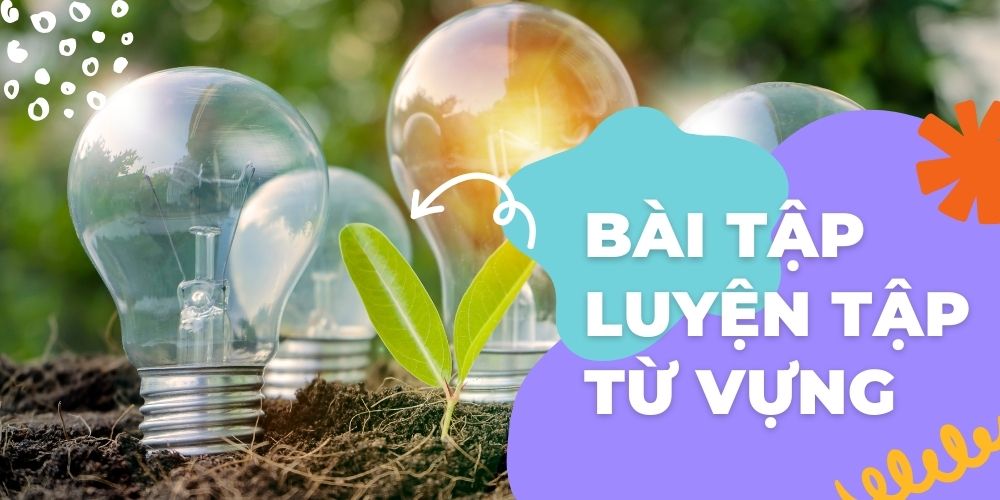

- Renewable energy sources, such as __________ and __________, harness natural elements to generate power.
- The process of converting sunlight into electricity is known as __________.
- __________ energy is produced from the movement of water, often used in dams to generate electricity.
- What is the primary advantage of using __________ fuels like coal and oil for energy production?
- Wind turbines use the kinetic energy of the wind to turn a __________ and generate electricity.
- __________ is a form of energy stored in the Earth’s internal heat, often used for heating and electricity.
- __________ fuels release carbon dioxide when burned, contributing to the greenhouse effect.
- The sun is a potent source of __________ energy that can be converted into electricity using solar panels.
- What is the main environmental concern associated with the use of __________ energy sources?
- __________ is the measure of how well a device converts input energy into useful output energy.
- Energy __________ involves using less energy to perform the same tasks, reducing overall consumption.
- LED bulbs are more __________ than traditional incandescent bulbs, consuming less electricity for the same brightness.
- A device that converts chemical energy into electrical energy is known as a __________.
- The __________ is a network of power lines that transports electricity from power plants to homes and businesses.
- How can individuals contribute to __________ by reducing their energy consumption at home?
- __________ energy is generated by the movement of waves, offering a potential source of power.
- The __________ effect refers to the trapping of heat in the Earth’s atmosphere by certain gases.
- What role do __________ play in capturing and storing solar energy for later use?
- A __________ is a device that stores electrical energy for later use.
- __________ fuels are derived from living organisms and can be used as an alternative to traditional fossil fuels.
- A nuclear __________ produces electricity through the controlled fission of uranium atoms.
- What is the difference between __________ and __________ energy sources in terms of their environmental impact?
- The process of capturing and storing carbon dioxide emissions is known as __________.
- __________ is the ability of a system to perform work or produce a change.
- What are the advantages and disadvantages of using __________ for power generation?
- __________ energy is the energy stored in an object due to its position or state.
- A device that converts the energy of flowing water into electricity is called a __________.
- __________ energy systems can operate independently of the main power grid.
- __________ is the unit of measurement for electrical energy consumption.
- __________ energy is generated by harnessing the natural heat of the Earth’s interior.
- What is the significance of reducing the __________ of buildings to improve energy efficiency?
- __________ is a process that captures and reuses waste heat to improve overall energy efficiency.
- How does the use of __________ appliances contribute to reducing energy consumption?
- A __________ is a large-scale installation of wind turbines designed to capture wind energy.
- __________ is the process of adjusting electricity use in response to changes in demand.
- __________ is a key factor in determining the efficiency of solar panels in converting sunlight into electricity.
- __________ measures the amount of carbon dioxide emitted by an individual, organization, or activity.
- The __________ sector is a major contributor to greenhouse gas emissions.
- The __________ footprint of a product includes the environmental impact throughout its lifecycle.
- __________ involves the integration of various renewable energy sources for a more sustainable power supply.
- How does the use of __________ materials in construction contribute to energy efficiency?
- __________ refers to the reduction or elimination of greenhouse gas emissions to achieve a balanced carbon cycle.
- An __________ is a device that converts sunlight directly into electricity using semiconductors.
- What are the environmental benefits of transitioning to __________ sources of energy?
- __________ is the process of capturing and storing solar heat for space heating and water heating.
- __________ is the movement of heat through materials, often reduced through proper insulation.
- The __________ of a power plant indicates its capacity to generate electricity.
- How does a __________ system utilize both electricity and heat for maximum energy efficiency?
- The __________ industry is exploring advanced technologies to reduce carbon emissions from power generation.
- __________ measures the energy efficiency of heating and cooling systems.
- How do __________ contribute to reducing the carbon footprint of transportation?
- __________ appliances automatically adjust energy consumption based on usage patterns.
- __________ is the rate at which energy is used over a specific period.
- The __________ of a building refers to its ability to maintain a comfortable temperature without excessive energy use.
- How does the concept of __________ apply to balancing energy supply and demand?
- __________ is the process of extracting and burning fossil fuels to generate electricity.
- __________ energy refers to the potential energy stored in an object due to its height.
- A __________ is a device that converts sunlight into thermal energy for heating purposes.
- __________ are devices that capture sunlight and convert it into electricity.
- __________ systems allow for the production of electricity and heat simultaneously.
- What are the challenges associated with the widespread adoption of __________ in transportation?
- A __________ is a system that captures and stores rainwater for later use in irrigation or other purposes.
- __________ measures the energy efficiency of appliances and electronics.
- The __________ of a region influences the types of renewable energy sources that are most viable.
- How does __________ contribute to reducing the demand for energy from traditional power sources?
- __________ is the energy efficiency of a device relative to the amount of energy input.
- A __________ is a device that converts the chemical energy of a fuel into electrical energy.
- How can individuals and businesses participate in __________ programs to reduce energy consumption?
- __________ energy systems utilize small-scale, localized power generation.
- The __________ effect results from the release of methane during the production and use of natural gas.
- What is the role of __________ in capturing and storing carbon emissions from industrial processes?
- __________ is the total amount of greenhouse gases produced directly or indirectly by human activities.
- __________ materials are those that require less energy to produce and have a lower environmental impact.
- A __________ is a device that converts the energy of ocean waves into electricity.
- __________ is the process of generating electricity from the heat produced by radioactive decay.
- How can the use of __________ in transportation contribute to a reduction in greenhouse gas emissions?
- __________ is the process of capturing carbon dioxide emissions from power plants and industrial facilities.
- The __________ of a power plant influences its environmental impact and efficiency.
- __________ measures the amount of energy consumed by a building for heating and cooling.
- __________ fuels are derived from plants and organic materials, providing a more sustainable alternative.
- What are the key considerations in designing an __________ building for maximum energy efficiency?
- __________ is the practice of adjusting energy use during peak demand periods to avoid strain on the power grid.
- __________ is the energy generated by the movement of air masses, often harnessed by wind turbines.
- __________ is the process of converting carbon dioxide into a stable form to prevent its release into the atmosphere.
- __________ is the integration of various renewable energy sources to ensure a consistent power supply.
- The __________ of an energy-efficient device indicates its ability to perform a task with minimal energy consumption.
- __________ is the amount of energy consumed by a device when it is not in use.
- __________ measures the efficiency of a solar panel in converting sunlight into electricity.
- __________ is the process of capturing and storing carbon emissions in geological formations.
- How can __________ contribute to the reduction of carbon emissions in the transportation sector?
- __________ systems use the Earth’s natural heat to provide heating and cooling for buildings.
- The __________ of a region influences the types of renewable energy sources that are most feasible.
- How does __________ technology contribute to more efficient and sustainable energy use?
- A __________ is a device that converts the energy of the sun into electricity for residential or commercial use.
- __________ is the process of using waste heat from industrial processes for additional energy production.
- __________ fuels are considered a finite resource due to their slow formation over millions of years.
- What are the benefits of incorporating __________ features into the design of buildings?
- __________ is the process of adjusting energy consumption based on real-time data and user preferences.
- __________ appliances are designed to minimize environmental impact throughout their lifecycle.
- How can individuals contribute to the reduction of __________ by adopting more sustainable lifestyles?
Lời giải:
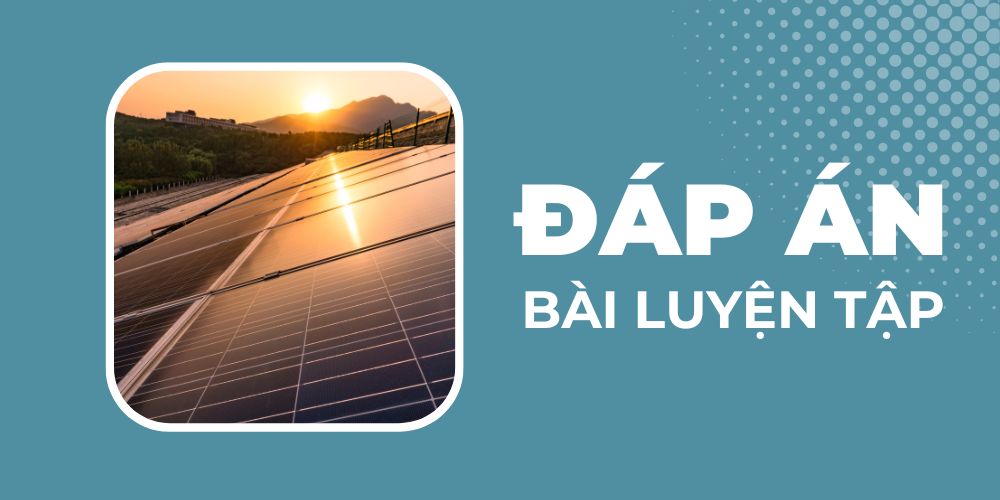

- Solar, wind
- Photovoltaic
- Hydroelectric
- Abundance
- Rotor
- Geothermal
- Fossil
- Solar
- Impact
- Efficiency
- Conservation
- Energy-efficient
- Battery
- Grid
- Conservation
- Wave
- Greenhouse
- Photovoltaic cells
- Battery
- Biomass
- Power plant
- Renewable, non-renewable
- Carbon capture
- Energy
- Advantages, disadvantages
- Potential
- Turbine
- Off-grid
- Kilowatt-hour
- Geothermal
- Insulation
- Cogeneration
- Energy-efficient
- Wind farm
- Demand response
- Efficiency
- Carbon footprint
- Industrial
- Lifecycle
- Integration
- Sustainable
- Carbon neutrality
- Photovoltaic cell
- Environmental
- Solar thermal
- Heat transfer
- Capacity
- Cogeneration
- Power
- Coefficient of Performance (COP)
- Electric vehicles
- Smart
- Consumption
- Insulation
- Demand
- Combustion
- Potential
- Solar collector
- Solar panels
- Cogeneration
- Challenges
- Rainwater harvesting
- Energy Star
- Geography
- Decentralization
- Efficiency
- Fuel cell
- Demand-side management
- Distributed
- Methane
- Carbon capture
- Carbon footprint
- Sustainable
- Wave energy converter
- Nuclear
- Electric vehicles
- Carbon capture
- Design
- HVAC (Heating, Ventilation, and Air Conditioning)
- Biofuels
- Building design
- Peak shaving
- Wind
- Carbon sequestration
- Integration
- Efficacy
- Standby power
- Solar panel efficiency
- Carbon capture
- Electric vehicles
- Geothermal
- Geography
- Smart grid
- Solar panel
- Combined heat and power (CHP)
- Fossil
- Green building
- Smart grid
- Sustainable
- Carbon footprint reduction


